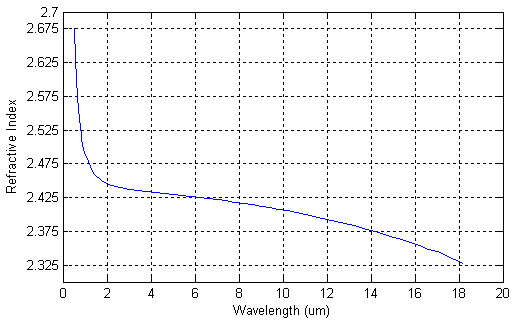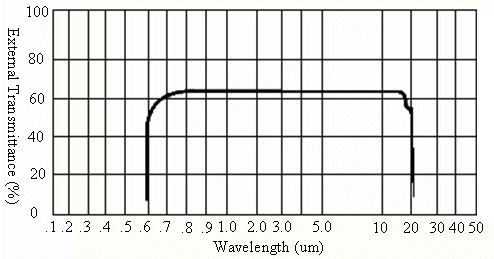|
|
Miscellaneous IR Materials |
||||||||||||||||||||||||||||||||||||||||||||||||||||||||||||||||||||||||
|
Other IR materials include infrared glass, Zinc Selenide, Calcium Fluoride and Magnesium Fluoride. Despite intensive efforts in developing IR glasses, the commercialization is still in the early stages. IR glasses can be categorized into germinate glasses, chalcogenides and chalcopyrites. These materials have several drawbacks which limit their applications. They have low fracture strength, which makes them quite brittle. They are also quite soft, which makes them difficult to polish. They are sensitive to thermal shock, which is aggravated by the existing surface condition. Some materials contain toxic ingredients such as arsenic and selenium, which requires strict safety precautions when handling. Moreover, their numerous absorption bands in the IR region limit their usefulness. Zinc selenide for IR optics is a light yellow, polycrystal binary compound. It has a remarkably wide transmission wavelength range form 0.6 to 15um . Zinc Selenide, produced by the chemical vapor deposition method, is the preferred material for optics used in high power CO2 laser systems due to its low absorption at 10.6um and a high resistance to thermal shock. For high transmission, it requires an anti-reflection coating due to its high refractive index. Zinc Selenide is a relatively soft material which makes it hard to achieve a decent polished surface and it scratches rather easily.
Calcium fluoride and magnesium fluoride are crystals. Both crystals have good transmission form the vacuum ultraviolet into the infrared. They are particularly for excimer laser application in UV region. Their properties will be introduced in optical crystals. |
||||||||||||||||||||||||||||||||||||||||||||||||||||||||||||||||||||||||||
Copyright © 2016 Precision Micro-Optics Inc. All Rights Reserved.




